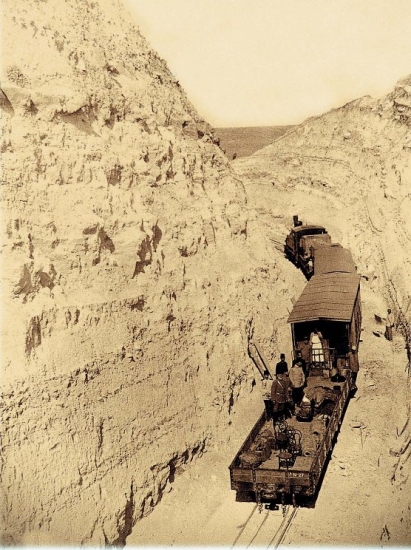
Exhibition 'The Railway of Faith' on the 100th anniversary of the Hejaz (Hedjaz) Railway, Eretz Israel Museum, Tel Aviv – curator, Sarah Turel - closes: November 28, 2009
On May 2, 1900, Turkish Sultan Abdul Hamid II, ruler of the Ottoman Empire, declared his wish to build a railway that would enable Muslim pilgrims in Damascus, Syria, to reach the Islamic holy cities of Mecca and Medina. The railway would run through the Hejaz in the Arabian Peninsula that comprises the Damascus-Medina line (1,320 km.) and a line from Derà to the coast at Haifa, Palestine (161 km.).
Before the railway, the pilgrim's journey, using camels, would take from 40 – 50 days from Damascus to the holy cities of Medina and Mecca, during which the pilgrims experienced many risks such as robbery from itinerant Bedouin tribes, sickness, floods. In addition there was the difficulty and suffering of a long journey.
The exhibit presents a collection of artifacts of that period ― photographs and postcards from the time the railway was built, which are juxtaposed with contemporary photographs of the same sites, sections of the railway, original maps, films and rare philatelic items, such as letters that were sent via the Hejaz (Hedjaz) Railway and stamped in the carriage that provided postal services to the travelers and cities and towns along the route. The exhibit is under the auspices of the Turkish Embassy in Israel.
The Hejaz Railway, known as the Train of Faith, was built between 1901 and 1908 thanks to donations from Muslim believers. It is designed to carry pilgrims to the holy cities of Mecca and Medina, to the holiest shrines of Islam, which was the main purpose of its construction. The intended goal of the construction initially was to lay the tracks to the holiest of Muslim pilgrim sites – Mecca, Saudi Arabia, where the Kabaa, the holy symbol of Islam is located. In fact it never reached further south than Medina, 400 km (250 miles) short of Mecca.
Note: "Kabaa - the central cubic, stone structure, covered by a black cloth, within the Great Mosque in Mecca, Saudi Arabia. The sacred nature of the site predates Islam: tradition says that the Kabaa was built by Adam and rebuilt by Abraham and the descendants of Noah. Also known as the House of God, it is the center of the circumambulations performed during the Haj (pilgrimage) aj (HHH and it is toward the Kabaa that Muslim faithful face in their daily prayers." (The Free Online Encyclopedia)
The Sultan intended the railway’s construction to be financed exclusively by Islamic sources; the Sultan, as Khalif, invited the faithful to contribute towards the expenses of building the " pilgrim railway," and in all, about £1,000,000 was raised in cash or kind by voluntary subscriptions throughout the Muslim world. The levies on officials and soldiers produced additional revenue - some £250,000. The rest of the cost of the railway, which was approximately four million pounds sterling, was contributed by the Sultan, the rulers of Egypt and Iran, Morocco and Bukhara, as well as numerous Muslim believers throughout the world. The railway is rather remarkable both for having had no debt when completed and for having many miles of track below sea level.
The secondary purpose was to improve the economic and political integration of the distant Arabian provinces into the Ottoman Empire. The building of the line also had a military purpose, which was to send troops and military hardware in the event of unrest or war.
It was an unprecedented engineering and economic feat, unlike any other in the history of the empire. The railway from Damascus to Medina was completed on September 1, 1908, the 33rd anniversary of the sultan’s accession to the throne. Traveling time was approximately 72 hours in comparison to the many weeks it took by camel caravan.
The Sultan’s aspiration to continue the construction of the railway, which would eventually reach Mecca, never materialized. In 1909 Abdul Hamid II was deposed by the revolution of the Young Turks and with his fall the construction of the railway came to an end. In addition to its religious designation, the Train of Faith served the Ottoman regime for transporting military forces to the Medina region. After the outbreak of the revolt (1916) the railway was repeatedly damaged by Arab guerilla forces; the line extension to Ma`an was so completely destroyed as to be beyond repair. Even in the intermittent times of peace, organized raids by the Bedouin continued until 1921. During the First World War the railway was damaged several times by the Arab rebels who fought against the Turks under Lawrence of Arabia, thus serving British strategic interests.
After the fall of the Ottoman Empire, the railway never reopened south of the Jordanian-Saudi Arabian border. Two connected but non-contiguously operated sections of the Hejaz Railway are in service: "Hejaz Jordan railway" – "Aqaba railway from the phosphate mines near Ma’an, Jordan, to the Gulf of Aqaba.
The Hejaz railway had a branch line that passed through the Land of Israel and connected Haifa to the Syrian town of Dara. In the Jewish yishuv (homeland) it was known as rakevet ha’emek, the valley train. This branch-line greatly contributed to the development of the city of Haifa and the Jewish localities in the Jezreel Valley. The valley train came to an end in 1948 during Israel’s War of Independence, but it has remained in the collective memory of the kibbutzim, using the line and as a visual icon and a source for poetry and fiction.
Note: There are also plans by Israel railways to rebuild the long-defunct Haifa extension of the railway, the Jezreel Valley line, in Israel using standard gauge, with the possibility of later extending it to Irbid in Jordan.
'The Railway of Faith' – Eretz Israel Museum, Tel Aviv, Israel, Curator - Sarah Turel - 2 Haim Levanon St., Ramat Aviv, Tel Aviv 69975, Israel Public Relations: (03) 641- 5820, email: mirit@eretzmuseum.org.il
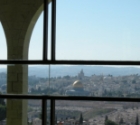 The Morman University Sunday Concert, with ESRA
The Morman University Sunday Concert, with ESRA  Congratulations to ESRA Rehovot on its 10th
Congratulations to ESRA Rehovot on its 10th 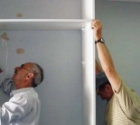 THANK YOU!
THANK YOU! Art from the Heart
Art from the Heart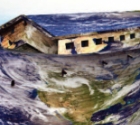 Jewish Art Returns to Jerusalem
Jewish Art Returns to Jerusalem Musical Treats
Musical Treats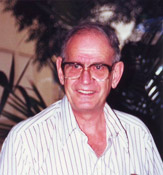 Norman A. Rubin
Norman A. Rubin